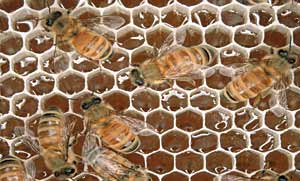As long as the U.S. construction boom remains strong, there will be stiff competition among architecture firms for talented, experienced employees. Pay and bonuses are rising to attract architects away from rival firms. And yet many firms are neglecting a gold mine of talent—right in their own backyards. By developing and promoting their existing staff, and by nurturing a culture that encourages staff loyalty, firms can better manage growth at less expense than by seeking outside talent. Indeed, firms may discover that strengthening firm culture brings additional benefits.

According to Justin Roy, a retention specialist with SullivanKreiss, an AEC executive search firm, competition is particularly fierce now for architects with 10 to 20 years of experience. “Salaries are skyrocketing,” he says, and firms are offering extra vacation, more 401K funding, or fully subsidized medical insurance. Consulting firm ZweigWhite reports this competition has pushed the median pay plus bonuses for project managers in engineering, planning, and environmental consulting firms over six figures for the past three years. Moreover, the surveyed firms predict a 10 percent increase in incentive compensation (bonuses and profit sharing) in the course of the coming year.
Nevertheless, ZweigWhite statistics say, median staff-turnover rate has held steady at nearly 15 percent (12 percent voluntary) for the past four years, fueling recruitment competition and pay inflation. An alternative would be to lower the turnover rate, but according to ZweigWhite consultant Derwin Irvine, retention initiatives are getting short shrift. “The principals I talk to recognize turnover as a big problem, but when there’s a time crunch, they’ll focus on projects and clients rather than on their own staff,” he says.
Though good pay is important, it’s not everything. A ZweigWhite survey found the three top factors in attracting and retaining staff are challenging work, advancement opportunities, and educational growth. It’s all about respect: firms helping lower-ranking staff in their professional growth and making sure the projects themselves inspire pride, whether through environmental leadership, social responsibility, or design excellence. And a firm’s search for cultural identity and morale boosting can be laced with creativity and fun. The final evaluation about whether a firm is a good place to work or a hive filled with worker bees depends on many intangibles.
Career development
One effective way to acquire talent is to develop it from within. Firms often fund employee’s licensure expenses, and travel to conferences, for instance. Many bring continuing education in-house. Cannon Design, a firm that has won awards for providing a positive work environment, has created the “Cannon Design Academy,” which provides in-house and online training and education to the firm’s 700+ employees. The academy has provided over 6,000 AIA learning units and offers over 30 seminars and forums firmwide, many designed as tutorials for the registration exam. The course subjects range widely, including ADA requirements, building codes, telemetry in health care, seismic design, fast tracking, lighting design, and team building.
Roy suggests a still more intensive educational opportunity for selected junior staff. “Why not pay them to get a master’s degree while continuing to work part- or full-time?” He explains, “You can write it off; you can make them sign something that says they have to stay for a certain number of years after they graduate. What a great way to hold on to your people!”
In parallel with course offerings, Cannon Design is also active in promoting explicit mentoring programs in which senior staff take younger architects under their wing. Senior leaders participate in formal “train-the-trainer” sessions to learn how to mentor effectively. They then assist junior employees in obtaining professional registration through the Intern Development Program.
One key to success for mentoring programs is good management. Lori Oakes-Coyne, principal with ZweigWhite’s Human Resources Advisory Services group, says programs should be clearly structured and aligned with the firm’s strategic plan. Firms should designate a facilitator to monitor and evaluate the program and to stay in touch with both mentors and mentees. Crucial to the program’s success, says Oakes-Coyne, is the selection of experienced managers as mentors. Equally important is pairing mentors and mentees who have compatible personalities, professional backgrounds, and career ambitions. Program evaluation is important to determine where improvements can be made.
Perkins+Will has developed a program to identify and promote young talent within the large firm. Since 2003, the firm has held a design competition for its junior staff. The winning team or individual, selected by outside jurors, is given a cash award and an invitation to present their work to the firm’s design leaders and board members. The winners are also invited to participate in leadership meetings for a year. The competition process also internally reinforces the firm’s values of sustainable design and social responsibility.
